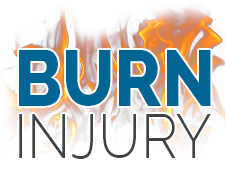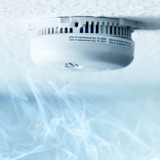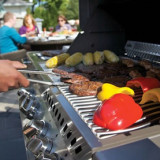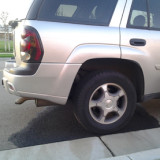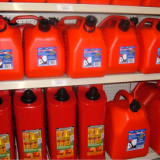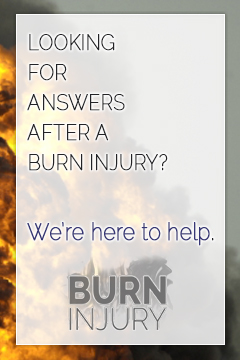Smoke Detectors 101
Most people realize the importance of having functional smoke detectors in their homes. Many know that if it beeps, it’s time to change the battery. Some may do a monthly test of the smoke detector. However, many people are unaware that there are different types of smoke detectors. Each type is designed to detect fires in different ways. The type of smoke detector you have could be the determining factor in the safety of your family should a fire occur inside your home. Ionization Vs. Photoelectric There are two main types of smoke detectors in most American homes. The most common type is referred to as an ionization smoke detector. In fact, it is more accurate to say it is a fire detector since it reacts mainly to the flames of a fire. While this is very useful, the problem occurs when slow, smoldering fires break out. Characteristics of ionization smoke detectors include: Most common type, used in approximately ninety-five percent of homes Reacts most quickly to flames rather than smoke Takes anywhere from fifteen to thirty minutes longer to react to smoldering fires Photoelectric Smoke Detector The other type of smoke detector is referred to as a photoelectric smoke detector. This is found much more rarely in homes. This type of detector reacts more quickly to smoke. While this is good for small, slow burning fires, it often does not react as quickly to fast burning flames that produce less smoke. Characteristics of photoelectric smoke detectors include: Found in only about five percent of homes Reacts more quickly to smoke but less quickly to fast burning fires May be more expensive than an ionization smoke detector Most deaths are attributed to slow burning fires due to the fact that they usually occur at night when people are sleeping. They do not make much noise but they produce toxic smoke that can asphyxiate the people inside. By the time the ionization detector is activated, it could be too late. If the fire is more aggressive, that can limit the time available for safe escape. It has been suggested that manufactures of ionization alarms, by far the most popular type, have known about the shortcomings of this type in detecting certain fires. Burn victims might consider seeking legal counsel if they feel they were not adequately warned by their smoke detector. How to Protect Your Family The best option for protecting your family from any fire is to install both types of alarms. While photoelectric alarms tend to be a bit more expensive that ionization alarms, the margin is not much and it is a very small investment to ensure the safety of your family. There are also companies that manufacture combination ionization/photoelectric alarms. Most experts agree that this is the best option in terms of safety. Sources: Taylor, Richard. “The Defect in Smoke Alarms.” Scribd. 10 Dec. 2010. Web. 15 Dec. 2014. <http://www.scribd.com/doc/34154792/The-Defect-in-Smoke-Alarms>. “For the Best Protection, Use Both Types of Smoke Detectors.” For the Best Protection, Use Both Types of Smoke Detectors. Consumer Report News, 25 Mar. 2013. Web. 15 Dec. 2014. <http://www.consumerreports.org/cro/news/2013/03/for-the-best-protection-use-both-types-of-smoke-detectors/index.htm>. “Ionization vs Photoelectric.” Ionization vs Photoelectric. 26 Feb. 2014. Web. 15 Dec. 2014....
read moreGel Fuel Safety
Gel fuel is a highly flammable liquid that is usually alcohol or ethanol based. The gel is often used for keeping dishes hot at outdoor picnics, keeping Tiki torches lit, fueling decorative ceramic pots, and keeping insects away. The fuel can stay lit for longer than many other fuel sources and does not put off an odor, so it can be an attractive product that consumers are drawn to. However, gel fuel presents a serious burn danger if burning fuel comes in contact with skin, clothing, or other items. Pourable gel fuels pose a very serious risk of injury that consumers are not aware of. Pourable Gel Fuel Recall In June 2011, pourable gel fuel was recalled by nine major manufacturers and sale of the volatile fluid was halted. The recall began following many different incidents in which consumers were burned or injured after pouring the gel fuel into already burning containers. The addition of more gel fuel to gel fuel that is already burning can cause an explosion. A flame can also ignite the fuel as it is being poured and can travel back into the container, injuring the user. Many types of gel fuel do not create a highly visible flame; so many victims have poured the gel fuel into the containers believing that the fuel was no longer burning, leading to catastrophic fires and explosions. Consumers have also burned when lighting the fuel or after the fuel had been spilled. Pourable Gel Fuel Lawsuits The product has been deemed to be inherently dangerous, and many lawsuits were filed by people that had been injured or had family members killed following gel fuel explosions, spills, and burns. While pourable gel fuel have not been widely sold following these incidents, recall and lawsuits, many retailers are unaware of the danger and still sell the product. The product should not be sold. Those people that have been injured following the use of a pourable gel fuel are encouraged to contact an attorney. Gel Fuel Safety Tips To use gel fuel safely, the following safety tips should be observed: Do not use pourable gel fuel Opt for single-use containers Only use containers that are designated for gel fuel use Extinguish flames by placing a lid or other non-flammable cover over container Keep a wide area surrounding the gel fuel free of combustible materials Keep gel fuel away from children and pets, especially while burning Always store gel fuel in a cool area Do not smoke near gel fuel Sources: http://www.cpsc.gov/en/Recalls/2011/Nine-Manufacturers-Distributors-Announce-Consumer-Recall-of-Pourable-Gel-Fuel-Due-to-Burn-and-Flash-Fire-Hazards/ http://www.mass.gov/eopss/agencies/dfs/dfs2/osfm/pubed/fs-topics/fs-topics-a/gel-fuel-safety.html...
read moreGas Grill Safety
Grilling is a staple in American pastimes, as well as a healthy way to prepare our favorite foods. However, it’s important to make sure that individuals and families practice grilling safety, especially when using gas grills. When left unattended or used improperly, gas grills can pose a serious fire and burn injury risk. According to the Consumer Product Safety Commission (CPSC) roughly 30 individuals are injured from gas grill explosions and fires each year. Gas Grill Danger Facts The following are facts and statistics from the National Fire Protection Association: From 2007 to 2011, gas grills were involved in roughly 7,200 home fires. Charcoal grills and other grills using solid fuel were involved in 1,400 home fires. Roughly 29 percent of home fires involved grills that were started on an open porch or exterior balcony. Roughly 27 percent of home fires involved grills that were started on a terrace, courtyard, or patio. Nearly half of these home fire incidents were caused by a combustible or flammable liquid or gas catching fire. Gas Grill Maintenance It’s important for gas grill owners to consistently maintain their grills and make sure all parts are in working order. This should be done routinely in between uses. Check burner tubes for blockages from food grease, spiders, or insects. Use a wire or pipe cleaner to push blockages through to the main component of the burner. Check hoses for brittleness, cracking, leaks, and holes. Also remove all sharp bends in tubing or hoses. Immediately replace nicked or scratched connectors, which may cause a gas leak. If there is any damage in the tank valve or grill, call a qualified repair professional instead of attempting to fix it yourself. Gas Grill Safety Tips Gas grill owners should adhere to the following safety tips for gas grill use: Always use propane tank cylinders in a vertical, upright position. Follow manufacturer instructions for using the gas grill. Move gas hoses from dripping hot grease and hot surfaces. If they can’t be moved, install a heat shield protector. Grill at least 10 feet away from a home or other building. Never grill indoors or in garages, carports, porches, or under flammable surfaces. Follow the manufacturer’s instructions to check for gas leaks. If you smell gas or detect a leak, do not use the grill until the issue is...
read moreFireworks Safety 101
Sources: “Sparklers 16 percent of fireworks harm.” United Press International. June 22, 2009. “The Dangers of Fireworks.” Topical Fire Research Series. Volume 5, Issue 4. U.S. Fire Administration/National Fire Data Center. http://www.ameriburn.org/Preven/SummerSafetyEducator’sGuide.pdf http://www.cpsc.gov/en/Safety-Education/Safety-Education-Centers/Fireworks/ ttp://www.nsc.org/news_resources/Resources/Documents/Using%20Fireworks%20Safely.pdf Click For Hi-Res Version Use the code below to embed infographic <a href="https://burninjuryguide.com" target="_blank"><img src="https://burninjuryguide.com/wp-content/uploads/2014/07/DWK_Fireworks_Final_HighRes.jpg" alt="Fireworks Safety 101" style="width:100%;"...
read moreGas Leak Dangers
A gas leak is among the most common causes of vehicle fires. Gas leaks can occur for a number of reasons, such as issues with the gas cap or vehicle’s fuel line. Gas is highly flammable, which presents significant risk of burn injury from gas leak fires and explosions. Gas Leak Causes A number of factors can cause or contribute to a gas leak and subsequent gas leak dangers. A gas leak may be caused by a hole in the gas tank, damaged fuel lines, damaged fuel injectors, gas tank cap issues, gas tank vent hose issues, or fuel pressure regulator issues, among other problems. If drivers suspect a gas leak but are unaware of the possible cause, the vehicle should be taken in for an inspection as soon as possible to determine the source and fix the gas leak. Leaking Fuel Line The majority of vehicles have a metal line running the length of the vehicle which transports gasoline from the fuel tank to the engine. Both ends of this metal line are typically connected by rubber fuel lines. A leaking fuel line can be caused by a number of factors, such as wear-and-tear that comes with age. A leaking fuel line is often simple to fix in cases where the rubber components can be repaired or replaced. Gas Leak Signs A vehicle with a gas leak may exhibit the following signs: A strong and unusual gasoline odor coming from the vehicle Abnormally rapid use of fuel in comparison to past fuel use rate The presence of gasoline “puddles” that form underneath the car Rough idle, or unsmooth functioning while the car is running but not in motion Hard start, or excessive strain when attempting to start the engine Fire and Explosion Risks Due to the highly flammable nature of gasoline, a gas leak can easily lead to a fire or explosion. This can occur if the gasoline or its vapors come in contact with a heat source, such as a spark or very hot surface. As a result, the gas leak may ignite, posing severe risk of burn injury or death to drivers and passengers. In specific conditions, interaction between a gas leak, its vapors, and a heat source can lead to an explosion with catastrophic...
read morePreventing Gas Can Burn Injuries
In recent months, red plastic gas cans have received a slew of media and consumer attention. Blitz USA, the main manufacturer of these cans, faces several lawsuits from gas can explosion victims and their families. Victims allege that Blitz and its retail partners were aware of the dangers of these products. Experts claim that a simple addition called a flame arrester could potentially reduce the risk of explosion and injuries. However, neither Blitz nor its partners have appeared to make an effort to improve the safety of these gas cans. Consumers who use these cans and similar plastic gas cans are urged to practice safety precautions to prevent gas can burn injuries and death. Commercial Grade Gas Cans In light of reported injuries, experts recommend that consumers dispose of red plastic gas cans and discontinue their use. These gas cans should be replaced by professional or commercial grade gas cans. Metal gas cans are advised. For optimal safety, consumers should purchase new gas cans that have been approved by Underwriters Laboratories (UL). Underwriters Laboratories is an independent, non-profit organization dedicated to product safety testing and certification. Additionally, new cans should feature a spring-loaded cap and flame arrester. These gas cans can be purchased online or at traditional hardware stores. Gasoline-related Injury Statistics The National Fire Protection Association estimates that nearly 4,000 deaths each year are caused by gasoline-related fires and burns. Roughly 600,000 individuals receive emergency medical attention for gasoline-related fire and burn injuries. Of these, roughly 25,000 require admission into specialized burn centers. Property damage from gasoline-related fires costs roughly $450 million each year. Gas Can Safety Tips When using gas cans, consumers should always practice gas can safety precautions. Gas cans should never be left in a car trunk. In the summer heat, the vapors inside the gas can will expand. The resulting increase in pressure may allow these heated vapors to escape. An explosion may occur if an ignition source comes in contact with the vapors. Using Gasoline Safely Gasoline should only be used to power engines that require gasoline for fuel. Gasoline should not be used to light or fuel open fires, such as camp fires. A number of reported gas can explosions have occurred when individuals attempt to pour gasoline onto a fire. Additionally, gasoline should not be used as a weed killer, cleaning product, or substitution for kerosene. Gasoline and Children Parents and families should exercise special gasoline safety precautions when children are present. Adults hold extra responsibility in protecting children who are too young to understand the dangers associated with gasoline and gas cans. As a general rule, adults should ensure that children never have direct access to gasoline or gas...
read more